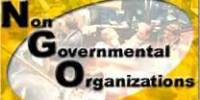Employment Policy
HSBC aim to run a sustainable business for the long term. This is about achieving sustainable profits for our shareholders, building long-lasting relationships with customers, valuing our highly committed employees, respecting environmental limits and investing in communities.
The current financial crisis has highlighted how important it is to look ahead to the challenges of the future. We believe that by doing this, we can provide shared value for our shareholders and the wider economy, the environment and society.
As a bank, we manage risk and identify business opportunities every day. We seek to embed social and environmental issues into what we do. Climate change and globalisation are critical trends shaping the way we do business in the future. These trends will affect the world’s poorest people most significantly. We aim to mitigate the risks and maximise the opportunities associated with these shifts.
Employment Policy Statement:
A strategic plan, in having the right number of employees for a businesses specific needs, which will also include information on the labour market and how they
operate, within HSBC, and the effects that the following factors will have on the labour market:
• Employment trends;
• Any sort of skill shortages;
• If there is any forms of competition between employees;
• And the availability of labour (both internally and externally
which the business (HSBC) can use, as an additional resource.
It would also involve me gathering information on how HSBC organises its labour
duties, and several other factors of a wide range of information regarding the process of decision making – in relation to internal staffing, such as information on:
• Labour turnover (stability index, wastage rate, etc.);
• Sickness and accidents;
• Age, skills and training needs;
• And succession.
As well to interpreting statistical information, relating to human resources planning (as this will also have a great significance and will contribute a lot, in analyzing how the human resource department plans some of their basic activities).
Overview 2009
Staff participation: 26% of total HSBC Bangladesh staff
participated in 2009 CS initiatives
Voluntary Hours:1300+ man hours
90% office time & 10% personal time
Education Helping the
disadvantaged
This report deals with the corporate sustainability (CS) events
and projects undertaken through 2009 by HSBC in Bangladesh.
These CS projects focused on three key areas:
Education, Assistance for disadvantaged and Environment
Visit to the Zoo
HSBC staff joined the children of School
of Hope for a daylong trip to the Dhaka
Zoo. For many of the children, this was
their first visit to the zoo. The exciting
zoo trip was followed by lunch for the
children at School of Hope.
CS Report 2009
Painting School of Hope
As an annual programme, about 40 staff
from HSBC teamed up to Paint the
school of Hope in December 2009. The
children and teachers from School of
Hope were thrilled to see the new look
of their school and appreciated HSBC’s
effort in painting their beloved school
anew.
Toy & Book Drive for School of
Hope
HSBC held both a toy and a book drive
where the staffs donated toys & a great
number of books for children of School of
Hope. 650 new and used toys where
collected for the toy drive programme
and distributed among the children.
The books ranged from children story
books to text books. The books were
collected for the library of School of
Hope.
Education Fund for SEID Trust
HSBC Provided an education fund
for the children of SEID trust. The
fund was provided for the salary
of one physical therapist for 2009.
SEID trust looks after the special
needs children of Bangladesh.
Talent Hunt Programme for
Special Children
Centres for Disables Concern
arranged a talent hunt program for
the children with special needs
which included a grand rally,
drawing competition, cultural
program and other events. This was
sponsored by HSBC and attended by
over 200 students from all over
Chittagong.
CS Report 2009
HSBC in Bangladesh launched YEA 2009-
2010 in December 2009. This is the
fourth installment of the programme which
was initiated in Bangladesh in 2006. YEA
invites undergraduate students from
Bangladeshi universities to participate in
this business plan writing competition.
The 3 best teams from Bangladesh will
win BDT70,000, BDT40,000 and
BDT30,000 prize money respectively. All
of them will fly to Malaysia for an entire
week, and the best team gets to take on
the best talents of Asia. In the regional
grand finale, the best teams from each
country compete against each other for
the regional Best of the Best, Diamond and
Jade awards. These awards come with
HKD100,000, HKD20,000 and
HKD10,000 prize money respectively.
HSBC Young Entrepreneur Awards 2009-10
HSBC Young Entrepreneur Awards 2008-09 Regional Finale:
Bangladesh wins Jade Award
CS Report 2009
HSBC Prothom Alo language competition celebrated its 5th year in 2009.
This year, the event was held in 8 districts with over 5500 students from
150 different schools of the region participating in the day-long programs.
60 winners from the 8 regional competitions took part in the national
finals.
HSBC Prothom Alo Language Competition Celebrates 5 Years
CS Report 2009
HSBC in Bangladesh joined hands with Blind Education and Rehabilitation
Development Organization (BERDO) to provide scholarships to a number
of visually impaired students.
Supporting the visually impaired
CS Report 2009
HSBC Group Provides GBP35,000 To ACTIONAID Bangladesh
The HSBC Group has provided funding of GBP35,000 (approximately
BDT34 lacs) to Actionaid Bangladesh for one of its local programs. This
amount was saved by not printing of greeting cards worldwide.
HSBC’s funding in Bangladesh would be used to provide shelter for girls
without home at night and drop in support during the day for girls who
find their livings on the street but return to a family or other home at
night.
Environment
HSBC Tops The 2009 Carbon Disclosure Project
HSBC has been rated number one in the financial sector and third overall
in the 2009 Carbon Disclosure Project (CDP). The CDP promotes
awareness of business implications of climate change by encouraging
the world’s leading companies to disclose information about their
greenhouse gas emissions.
►Taking effective action to manage risks and capitalise on new
opportunities arising from climate change;
►Implementing carbon reduction activities that deliver demonstrable
results; and
►Forward planning around expected regulation
HSBC in Bangladesh initiated a
HSBC Bangladesh
Carbon Footprint Management
CS Report 2009
HSBC supported the United Nations’ World Environment Day (WED) on 5
June 2009 by launching a global “Be Part of the Solution” campaign. HSBC
employees around the globe were encouraged to do their part by acting on
climate change.
Over 70 staff of HSBC Bangladesh, lead by HSBC Chief Executive Officer,
Mr Sanjay Prakash, went to the nearby park “Pantha Kunga”. There, the
staff helped clean up the park of debris, waste and other materials and
deposited the items to the nearby waste facility. In addition, staff also
planted about 600 fruit, flower and herbal trees in the park to provide a
greener look and future.
Earth Hour
HSBC Bangladesh along with 20 countries/territories
across Asia-Pacific joined millions of businesses and
homes worldwide in switching off building lights for
Earth Hour.
CS Report 2009
HSBC Climate Champion
HSBC Climate Partnership brings
together HSBC, The Climate
Group, Earth watch Institute,
Smithsonian Tropical Research
Institute and WWF. Key objectives
of the Partnership is to mobilize
HSBC employees to fight climate
change. To achieve this, HSBC
works with Earth watch Institute, a
top international environmental
charity, to develop employee
training programmers around the
world.
A colleague from HSBC
Bangladesh Joined the Climate
Champion program in India this
year. Under this programme she
helped the environment scientists
working there understand and
research various issues on climate
change.
CS Report 2009
HSBC in Bangladesh has sent a total of 28
staff since 2003 in these international
environmental programmes.
Culture
Painting Exhibition by Shahabuddin
HSBC in Bangladesh, sponsored a
solo painting exhibition by artist
Shahabuddin Ahmed, one of the
prominent artists of Bangladesh, at
Bengal Gallery of Fine Arts, Dhaka. At
the exhibition, Shahabuddin shared
some of his solo works that bear
testimony to a robust life-affirming
worldview and his relentless,
incessant quest for new artistic
forms.
CS Report 2009
responsibility responsibility responsibility
The more you look at the world, the more you recognise
how people value things differently.
Issued by the Hongkong and Shanghai Banking Corporation Limited in Bangladesh
www.hsbc.com/sustainability
CS Report 2009
HR ACTIVITIES:
HSBC bank has a strong HR culture in the organization, and it is maintained very tactically. As it is said that HSBC practices all the HR basic activities, this bank also offers strategic training sessions for its employees for the growth career. Let’s have a glance of the functions that HSBC applies:
• International market competitive compensations
• Personal and organizational benefits and rewards
• European standard training sessions
HRM Practices in Bangladesh
Performance metrics
Organizational charts
Diverse recruitment process
Proficiency development program (PDP)
Advanced HRIS (Human Resource Information System)
Four Step selection process
RECRUITMENT PROCESS:
The decisions to recruit staff are made, such factors would include:
The growth of the business
Changing Job Roles within the business
Filling vacancies created by resignation, retirement, dismissal, etc.
And internal promotion.
The selection of external recruits consists of the following steps:
CV Submission
Potential candidates interested in joining the bank are required to send their complete curriculum vitae. An acknowledgement of receipt is sent for all submitted applications to the candidate’s email.
Application Evaluation
The Human Resources department evaluates all incoming applications, against prerequisite abilities and skills set for all current openings. The identifications of the strengths and weaknesses of job applications, is obliged too – and the key implications for
recruitment on the following legislations: – Race Relations Act 1976, Equal Pay Act 1970, Sex Discrimination Act 1975 and the Disability Discrimination Act 1995;
All applications are kept based on strengths and specialization, for future reference.
Ability Tests
Potential candidates will be invited to participate in aptitude tests
i.e. numerical, verbal, English and psychometric, when deemed
necessary.
Capability Based Interviews
To ensure that our recruitment process is fair and consistent, all candidates who are successful at the exams are invited for a capability based interview. Interviews are based against capabilities, required for each position for which the candidate is interviewed for. A capability or competency is an ability described in terms of skills & behaviors that are essential to effectively perform within a job.
Reply Letters
At all stages of the process candidates are kept informed of the Status of their application with an email reply letter.
Job Offer
If a candidate successfully reaches the final stage, a position Offering is made in conjunction with a competitive reward package.
Internal selection is done through competency based recruiting, Succession process.
HSBC uses some external sources for recruitment. These are:
•Internet
•off shoring
•College recruiting
•Referrals
•Advertising
Internal recruiting is very high in HSBC. HSBC’s training and development activities are very high in quality so the recruiters emphasize to recruit internal capable candidates for the respective post. HSBC also uses HRIS for succession planning. It also a method of
the internal recruitment of HSBC.
SELECTION
HCBC runs Final Selection Centers (FSCs) in a number of key global locations, including London, Chicago, Hong Kong, Mexico and Dubai. If a candidate completes the telephone interview successfully, they will invite to the location most appropriate to them.
In Bangladesh
Face-to-face selection is done in the head HR departments’ office where the job is described eventually. The final step to success .The FSC is a two way process. It is a candidate’s opportunity to meet a number of current IMs (international Managers) and find out as much as possible about their experiences. HSBC wants candidates to be able to make an informed decision a candidate should receive an IM offer. The FSC consists of a number of capability based exercises, including:
Face-to-face interview
Group exercise
Written case study
Presentation
Role play
There is nothing candidates can do to prepare in advance for the FSC, other than to relax and be you. This is our opportunity to see how candidates perform in a number of different situations, against clearly defined criteria. HSBC also wants to get to know candidates better and understand what drives you towards the IM programme. “Head Hunting” process is very effective for HSBC. Through this they can easily recruit and select top level managers, though they are offering a very attractive compensation.
TRAINING AND DEVELOPMENT:
HSBC believes our primary competitive advantage comes from our employees. It is their ability to provide a superior customer experience to its customers that sets it apart from other financial services companies. In the ever changing financial services industry, all of us must continuously upgrade our skills and knowledge in order to maintain this competitive advantage. HSBC’s goal is to attract, retain and motivate the very best, and to do that it supports training, development, and business education through the following:
Internal Training Programmed such as Seminars, workshops and locally tailor made training on a variety of topics are offered directly by HSBC Training and Development Department at our training centre located at Motijheel.
External Courses:
Job related courses, seminars, workshops and conferences developed and presented at HSBC Offices in Asia and also at Group Training and Management Development Centre at Bricketwood, UK. Distance Learning Web-based and multimedia self-study programmes available through our Intranet and multimedia Learning Centers located in our HSBC offices. Resident Management Trainee Programme (RMT Programme) the Resident Management Trainee programme (RMT) aims to select a group of high potential executive trainees and provide them training and development opportunities. The RMT programme gives potential executives effective and systematic training to acquire an
excellent understanding of the commercial operations and business functions. The RMT programme ensures that successful applicants, with the right training, will have the ability and potential to reach the highest level of management within HSBC Bangladesh, and possibly beyond.
HRM Practices in Bangladesh
European training programme
Programme Overview
Providing a comprehensive insight into our retail and commercial banking businesses, it is designed to help employees develop the skills and experience you need to embark on a management career with HSBC in your home country through different placements overseas. This training is a part of HSBC’s performance management appraising process.
Programme Structure:
In total, the programme lasts approximately 20 months, commencing at the beginning of September 2009, with a two-week local induction course followed by a two-week UK induction course on 14th of September 2009.
Following the induction, you will undertake three four-month placements overseas and the last placement is for a six-month period in the home country.
2 weeks – Home country induction (Greece)
2 weeks – UK induction 14-25 Sept 2009
4 months – 1st overseas placement
4 months – 2nd overseas placement
1 week – UK training
4 months – 3rd overseas placement
6 months – Home country
Placement (Greec)
Typically these placements will take place in Europe, Canada, India, Sri Lanka or the United Arab Emirates. After the programme
At the end of the programme, a candidate is ready to take up a management position with HSBC in his/her home country.
Performance Management:
HSBC has a strong HR culture in their organization. Being a multinational company (MNC) it has their own way of daily evaluation. Through different formats of evaluation they measure their employees’ performance. Participant diary and observation these two methods are applied for evaluation. After evaluation using some metrics comes out
the performance appraisal of employees. Then it is decided whether the employee need more training sessions or developments. Succession is a very common practice in HSBC. It helps to reduce cost as well as determine the employee performances that are being ready for the expected post.
BENEFITS AND REWARDS:
HSBC continually evaluates and reviews its employee benefits to ensure that benefits are competitive and in line with its employees needs and to manage their diverse life.
REWARDS:
Salaries
Market competitive remuneration package
subject to annual review where individual performance is recognized.
Performance Bonus
Market competitive annual bonus based on results and individual
performance.
Incentive Schemes
Market competitive incentive schemes in specific business areas.
Share save
Employees are entitled to buy HSBC shares at a 20 per cent
discount on the market price
Achievement Shares
HSBC shares may be granted annually, depending on position
and individual performance.
Benefits
Private pension plan
Private medical plan for employees and dependents
Life and accident insurance
Medical check ups
Banking products with preferential pricing
Nursery and summer camp allowances
Bank car, parking space and allowances, depending on position
Eid children party, annual employee party etc
Market competitive remuneration package and annual cash bonuses.
Health plan and routine medical allowance including optical and dental treatment.
Short and long-term disability coverage, as well as life insurance.
Paid leave for marriage, maternity, sickness and vacation.
Staff banking privileges, including special interest rates for car
loans, sundry loans and home loans.
Loan Form:
An active Sports and Social Club.
Development opportunities and career support.
Retirement benefits
CONCLUSION:
HSBC is a very big organization in Bangladesh. This organization is also very important and influential in the industry. Human resource department is a basic part of business now days. So to run a business this department has a lot of activities to do. HSBC’s HR department is the department from where the organization is actually monitored and
controlled over time. In Bangladesh HSBC is operating for 13 years and have grown significantly. So after all the details it is clear that to run an organization effectively and efficiently it must have to do some HR jobs. Coz the resource of an organization helps it to grow. And the effective use of the resource makes the organization to reach up to its
expectations and objectives. Human resource is considered as the most important resource of business and to use this asset HRM has no alternatives. As for saying HSBC, it uses its most important resource by developing and satisfying every need of the employees which helps a lot to increase the OCB’s (organizational citizenship behavior)
positively.
Bangladesh is very young in HR practices. So most of the organizations are not concerned about the HRM practices. By using HRM organizations of Bangladesh can be more efficient than before and overall monitoring process will be more effective as well as beneficial. HRM actually maintains and creates organizational culture. A strong organizational culture is the key of its success. Considerably, we all hope that every organization of Bangladesh will soon start to practice all the HR activities for their long term
growth.
FINDINGS, SUGGESTION AND ANNEXURE
Findings:
The organization believes in achieving high standard of job performance from its employees and also believes in recruiting the best employees in any cost. The company has separate Human Resource Department to look after the employees at this period. The HR Department is responsible for the HR Planning, Recruitment & Selection, Training and Development, employee benefits, Performance Appraisal arrangements, Grievance handling, Disciplinary matters etc.
Positive Sides:
1 Organization has developed a professional Human Resources department and Personnel Policy Manual, which are rarely seen in organizations in the country. HR resources department is responsible to ensure proper execution of this policy manual.
2 Organization formed a Management committee; every month this committee seat together to review the common administrative and HR related issues.
3 The main appreciable point is that the group in successful to maintain a sound working environment within the organization. There is very nice cooperation found among the employees. Grievance procedure and Disciplinary procedure is use in very few occasions, which is ignorable.
4 Organization has a prescribed salary structure. Employees are getting everything on timely manner for which they are promised to be paid. Employees are extremely happy with their salary and other benefits, though some of them thing benefits should be reviewed and increased.
5 The Performance appraisal system itself works as a tool for motivation. Employees are awarded instantly on their performance after the Performance review with the management.
6 Two-way communication is the way of communication there. Every employee is aware about his /her duties, reasons of doing something, why it is assigned to him/her, to whom he should report etc. employee’s suggestions are taken care with importance. Therefore, they feel proud to work in the organization.
Subsidized lunch is available for the employees. 8 Legal section is available in the organization to ensure country law compliances.
Drawbacks:
Recruitment & Selection
1. Human Resources department do not check references
2. Do not send any regret letter
Staff Development & Training
1. Lack of organizing Staff orientation programmes for newly recruited employee regular basis.
2. Most of our participants cannot concentrate the whole session due to their daily job pressure.
3. Lack of proper follow-up after the training programme.
4. Shortage of required person in Human Resources department.
Current approach to HRM:
HR practices in Bangladesh
HR practice in Bangladesh is better than the past. In the past, HR role was concentrated to hiring firing and letter issuance-dispatching-filing stage. Now it has started to perform more than that. Such as ….Employee motivation, Employee development, employee retention, facilitating organizational development initiatives etc. and thus contributes to the achievement of organizational goals. These value added job has just begun in BD. For a good tomorrow, this is a starting point.
Employers have started to understand that the more they invest in human resources they more output is likely which lead them to emphasize on employee capability development. As such in many organizations, employee development is viewed as part of business plan. In these organizations, training budget is calculated as a percentage of total budgets of the organization.
Employer – Employee relationships is better than the past. Employers now recognize the importance of employee¡¦s participation in business planning, major decision making and organizational change process. Many organizations now conduct employee opinion surveys for collecting employee feedback and improve employer- employee relationships.
Some HR actions have legal implications. But in the country context legal explanation does not seem to be adequate. There is lack of uniformity of the interpretation of law that lead to practice by organizations in different way. There is also ambiguity of existing legal policy or detailed policy framework on HR actions seems to be incomplete.
„« In future the overall HR practice is expected to be brighter in Bangladesh because more are feeling the necessity of an established HR department in the organizational structure
„« employer-employee relationship is expected to improve,
„« IT will be part of HR practices which will make HR actions, decision making process faster and accurate
HSBC has over 260,000 employees at present. The company employs and manages diverse kinds of people all around the world. Such is done by the company because they believe that these people can give them a balanced and well rounded organization. This also makes the company adaptable to different kinds of situation. The company wants to reach out to all parts of employment for maximum productivity and value. The company believes that a company’s difference with its competitors can be seen in the way it serves it consumers and the way they treat their employees (2000). The company makes sure that they treat the employees with outmost respect for their rights and it makes certain that the company is given the treatment they deserve. The company’s personnel policies are geared to attract motivate and develop people who are perceptive, respectful, fair, progressive and responsive. The company aims to make itself a place people would like to work to. In the future the company can steer the goal of its HRM to making the personnel the most competent people in the industry. The company can initiate activities that will make the personnel more competent without ruining their good relationship.
12. Staffing Issues:
The purpose of the staffing process is to target workers most likely to perform the jobs in an organization efficiently. This entails an attempt to identify the kind of information necessary for predicting each candidate’s probability to succeed or fail in adjusting to work prior to being hired by the organization. It should be noted that job performance level is also commonly considered an indicator of work adjustment. It follows, then, that to the extent that effectiveness of predictors is assessed in terms of their ability to forecast job performance, this outcome also plays the role of criterion. However, each job in an organization or company has several area dimensions of performance, all of which can be referred to as criterion measures. It is also worth noting that criterion measures vary on a continuum of time intervals ranging from short term to long term ( 1990). Consequently, when setting out to examine the validity of a predictor or the effectiveness of a staffing program, the criterion measure against which this evaluation is performed should be chosen appropriately so that it reflects the work in an organization at a specific point in time or over a given time period. Job analysis is the process by which the criteria are defined for successful performance of the duties a job entails. For example, if companies are interested in finding a salesperson, they may define performance effectiveness as one of the criterion measures of satisfactoriness. They might then operationally define the essence of this criterion measure as the total number of items sold in a certain period or the number of defective products sold and returned by customers in a certain time span, and so on (1990).
One of the staffing issues that the company should consider as part of any future decision on continuing global expansion is discrimination. Discrimination is one thing that makes people in the organization be less productive and it ruins the personnel relationship. Discrimination should be given a proper solution by the company so that it will not be a hindrance for development of the company in the future. Another staffing issue is the morale of the personnel. There are some instances where the morale of the employees is low. This causes them to be less efficient and unproductive. Moreover a staffing issue that should be considered is harassment not only amongst superiors and subordinates but between their peers as well. This causes disruption of normal operations of the company. Lastly a staffing issue is the compensation. The personnel need changes in the amount of their compensation. It depends on the changes that are happening in the economy. The company must know when to increase compensation to make sure that they will encounter no problems in the future.
13. Finally:
HRM specialists initially determine the number and type of employees that a business will need over its first few years of operation. They are then responsible for recruiting new employees to replace those who leave and for filling newly created positions. The practice of HRM in the international context is different from its domestic counterpart in a number of ways. HSBC sees the Internet as one of several exciting new media, to be incorporated as an integral part of its working. The bank has concluded that e-commerce will change the fabric of the financial services sector and sees it as a way of finding new customers all over the world and improving its services to existing customers. The financial performance of the company means it is achieving its goal. This also means it has better products and services than its competitors. This also means that the company should improve the performance of its finances. The company makes sure that they treat the employees with outmost respect for their rights. The company’s personnel policies are geared to attract motivate and develop people who are perceptive, respectful, fair, progressive and responsive. The company aims to make itself a place people would like to work to.
















